System Builder Marathon Q1 2016: $662 Budget PC
It’s been a while since we’ve made a true low-budget machine. So how much performance can you get for under $600 of hardware now?
Test Setup & Benchmarks

Test Bench Hardware
The Redbone will be going up against the Intel Munchkin from last quarter as well as my predecessor's Q1 machine from last year. Paul's old build used a Haswell i3 and came in about the same price as the current Redbone, so it should be a close completion in many regards.
| System Components Comparison | |||
|---|---|---|---|
| Row 0 - Cell 0 | Q1 2016 Low-Budget PC | Q4 2015 Munchkin 2.0 | Q1 2015 Budget Gaming |
| Processor | Intel i3-6100: 3.7 GHz, 2C/4T, 3MB L3 | Intel i3-4170: 3.7 GHz, 2C/4T, 3MB L3 | Intel i3-4150: 3.5 GHz, 2C/4T, 3MB L3 |
| CPU Cooler | DeepCool 200T | Intel Boxed Heatsink and Fan | Intel Boxed Heatsink and Fan |
| Motherboard | ASRock Z170 Pro4S | ASRock H97M-ITX/ac | ASRock H81M-HDS |
| Graphics | Asus Strix GeForce GTX 950 2GB | Asus GeForce GTX 970 Turbo 4GB | Sapphire Radeon R9 280 3GB |
| Memory | Mushkin Redline DDR4-2400 C13, 8GB (2 x 4GB) | Crucial Ballistix Sport DDR3-1600 C9, 8GB (2 x 4GB) | G.Skill Ripjaws DDR3-1600 C11, 8GB (2 x 4GB) |
| System Drive | WD Blue 1TB 7200 RPM 64MB Cache 3.5" HDD | Samsung 850 Evo, 250GB 2.5" SSD | WD Blue 1TB 7200 RPM 64MB Cache 3.5" HDD |
| Power | Antec VP-450 450W, ATX12V, 80 PLUS Bronze | Seasonic M12II EVO 620W Modular, ATX12V, 80 PLUS Bronze | EVGA 100-W1-500-KR 500W, ATX12V, 80 PLUS |
| Core Components | $515 | $680 | $519 |
| Case | Rosewill Redbone U3 | Thermaltake Core V1 | NZXT Source 210 Elite |
| Total Performance Components Cost | $558 | $730 | $569 |
| Storage Drive | Uses System Drive | WD Blue 1TB 7200 RPM 64MB Cache 3.5" HDD | Uses System Drive |
| Optical Drive | None | Asus SDRW-08D2S-U, 8x DVD±RW, 24X CD-RW | Asus DRW-24B1ST, 8x DVD±RW, 24X CD-RW |
| Total Hardware Cost | $558 | $795 | $589 |
| OS | Windows 10 X64 OEM | Windows 10 X64 OEM | Windows 8.1 X64 OEM |
| Complete System Price | $663 | $895 | $689 |
Benchmark Suite
Similar to my motherboard reviews, I set this machine to stock clocks and enabled Intel Speed Step and other energy saving features. I use Windows default "Performance" power option preset for everything except idle power consumption where it's set to "Balanced." One difference is that the stock runs enable the memory XMP where available. Another is that the CPU fan is set to standard speed.
| Test Hardware Configurations | |||
|---|---|---|---|
| Row 0 - Cell 0 | Q4 2015 Munchkin 2.0 | Q4 2015 Munchkin 2.0 | Q1 2015 PC |
| Processor (Overclock) | Intel i3-6100: 3.7 GHz, Dual-Core with Hyper-Threading O/C to 3774 MHz | Intel i3-4170: 3.7 GHz, Dual-Core with Hyper-Threading | Intel i3-4150: 3.5 GHz, Dual-Core with Hyper-Threading |
| Graphics (Overclock) | Asus Strix GeForce GTX 950 1165MHz GPU, GDDR5-6600 O/C to 1505 MHz, GDDR5-7100 | Asus GeForce GTX 970: 1228MHz GPU, GDDR5-7010 O/C to 1400 MHz, GDDR5-7410 | Sapphire Dual-X Radeon R9 280 940MHz GPU, GDDR5-5000 O/C to 1080 MHz, GDDR5-5400 |
| Memory (Overclock) | 8GB Mushkin DDR4-2400 CAS 13-13-13-35, O/C to DDR4-2720 14-14-14-34, 1.3V | 8GB Crucial DDR3-1600 CAS 9-9-9-24, O/C to DDR3-1600 8-8-8-24, 1.5V | 8GB G.Skill DDR3-1600 CAS 11-11-11-28, O/C to XMP DDR3-1600 CAS 9-9-9-24, 1.5V |
| Motherboard (Overclock) | ASRock Z170 Pro4S Intel Z170 O/C to 102 MHz BCLK | ASRock H97M-ITX/ac Intel H97 100 MHz BCLK | ASRock H81M-HDS Intel H81 100 MHz BCLK |
| Case | Rosewill Redbone U3 | Thermaltake Core V1 | NZXT Source 210 Elite |
| CPU Cooler | DeepCool 200T | Stock | Stock |
| System Drive | Western Digital Blue 1TB 7200 rpm 3.5" | Samsung 850 Evo 250GB 2.5" SSD | Western Digital Blue 1TB 7200 rpm 3.5" |
| Power | Antec VP-450 | Seasonic M12II EVO 620W | EVGA 100-W1-500-KR 500W |
| Software | |||
| OS | Microsoft Windows 8 Pro x64 | Microsoft Windows 8 Pro x64 | Microsoft Windows 8 Pro x64 |
| Graphics | Nvidia GeForce 364.51 | NVidia GeForce 359.06 | AMD Catalyst 14.4 |
| Chipset | Intel INF 10.1.1.12 | Intel INF 10.0.0.27 | Intel INF 9.4.0.1017 |
| Benchmark Settings | |
|---|---|
| 3D Games | |
| Battlefield 4 | Version 1.0.0.1, DirectX 11, 100-sec. Fraps "Tashgar" Test Set 1: Medium Quality Preset, No AA, 4X AF, SSAO Test Set 2: Ultra Quality Preset, 4X MSAA, 16X AF, HBAO |
| Grid 2 | Version 1.0.85.8679, Direct X 11, Built-in Benchmark Test Set 1: High Quality, No AA Test Set 2: Ultra Quality, 8x MSAA |
| Arma 3 | Version 1.08.113494, 30-Sec. Fraps "Infantry Showcase" Test Set 1: Standard Preset, No AA, Standard AF Test Set 2: Ultra Preset, 8x FSAA, Ultra AF |
| Far Cry 3 | V. 1.05, DirectX 11, 50-sec. Fraps "Amanaki Outpost" Test Set 1: High Quality, No AA, Standard ATC, SSAO Test Set 2: Ultra Quality, 4x MSAA, Enhanced ATC, HDAO |
| Adobe Creative Suite | |
| Adobe After Effects CC | Version 12.0.0.404: Create Video which includes 3 Streams, 210 Frames, Render Multiple Frames Simultaneosly |
| Adobe Photoshop CC | Version 14.0 x64: Filter 15.7MB TIF Image: Radial Blur, Shape Blur, Median, Polar Coordinates |
| Adobe Premeire Pro CC | Version 7.0.0 (342), 6.61 GB MXF Project to H.264 to H.264 Blu-ray, Output 1920x1080, Maximum Quality |
| Audio/Video Encoding | |
| iTunes | Version 11.0.4.4 x64: Audio CD (Terminator II SE), 53 minutes, default AAC format |
| Lame MP3 | Version 3.98.3: Audio CD "Terminator II SE", 53 min, convert WAV to MP3 audio format, Command: -b 160 --nores (160 kb/s) |
| Handbrake CLI | Version: 0.99: Video from Canon Eos 7D (1920x1080, 25 FPS) 1 Minutes 22 Seconds Audio: PCM-S16, 48000 Hz, 2-Channel, to Video: AVC1 Audio: AAC (High Profile) |
| TotalCodeStudio 2.5 | Version: 2.5.0.10677: MPEG-2 to H.264, MainConcept H.264/AVC Codec, 28 sec HDTV 1920x1080 (MPEG-2), Audio: MPEG-2 (44.1 kHz, 2 Channel, 16-Bit, 224 kb/s), Codec: H.264 Pro, Mode: PAL 50i (25 FPS), Profile: H.264 BD HDMV |
| Productivity | |
| ABBYY FineReader | Version 10.0.102.95: Read PDF save to Doc, Source: Political Economy (J. Broadhurst 1842) 111 Pages |
| Adobe Acrobat 11 | Version 11.0.0.379: Print PDF from 115 Page PowerPoint, 128-bit RC4 Encryption |
| Autodesk 3ds Max 2013 | Version 15.0 x64: Space Flyby Mentalray, 248 Frames, 1440x1080 |
| Blender | Version: 2.68A, Cycles Engine, Syntax blender -b thg.blend -f 1, 1920x1080, 8x Anti-Aliasing, Render THG.blend frame 1 |
| File Compression | |
| WinZip | Version 18.0 Pro: THG-Workload (1.3 GB) to ZIP, command line switches "-a -ez -p -r" |
| WinRAR | Version 5.0: THG-Workload (1.3 GB) to RAR, command line switches "winrar a -r -m3" |
| 7-Zip | Version 9.30 alpha (64-bit): THG-Workload (1.3 GB) to .7z, command line switches "a -t7z -r -m0=LZMA2 -mx=5" |
| Synthetic Benchmarks and Settings | |
| 3DMark Professional | Version: 1.2.250.0 (64-bit), Fire Strike Benchmark |
| PCMark 8 | Version: 1.0.0 x64, Full Test |
| SiSoftware Sandra | Version 2014.02.20.10, CPU Test = CPU Arithmetic / Multimedia / Cryptography, Memory Bandwidth Benchmarks |
Synthetics

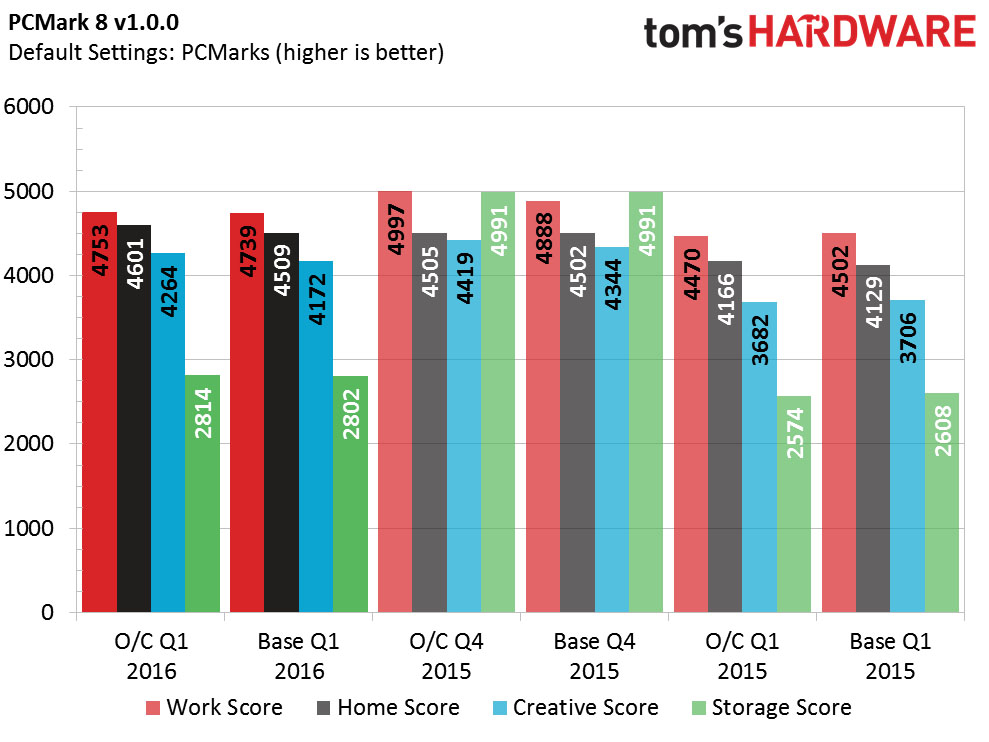
The 2015 and Munchkin both have stronger graphic cards, and so they take the lead in graphical tests. However Skylake demonstrates superior processing capacity with higher physics scores.

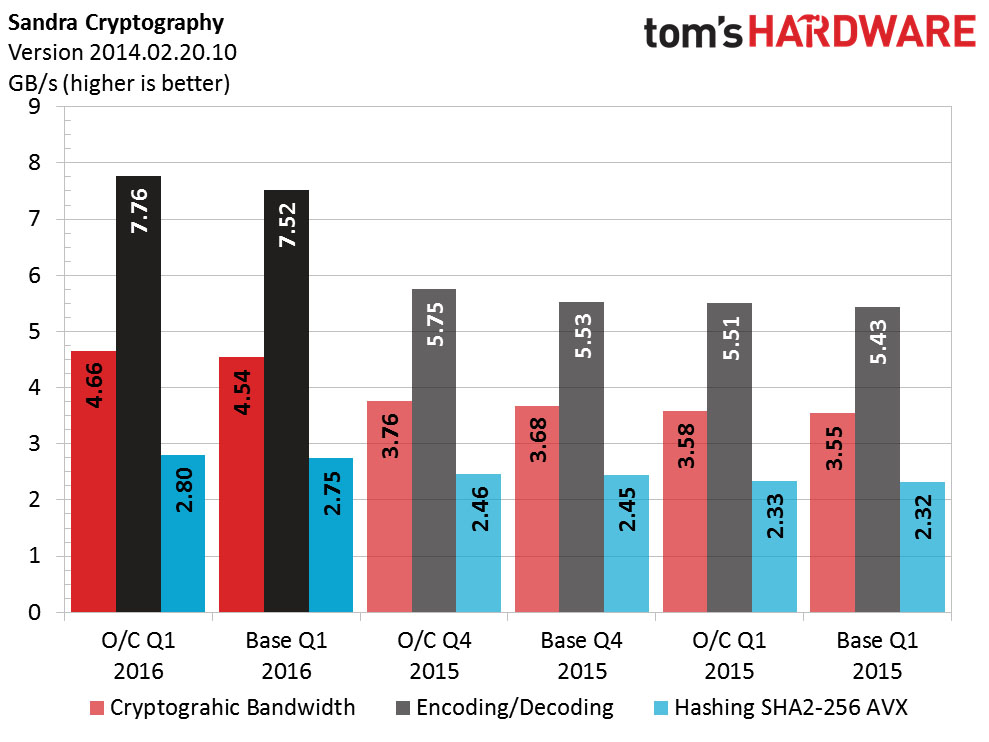
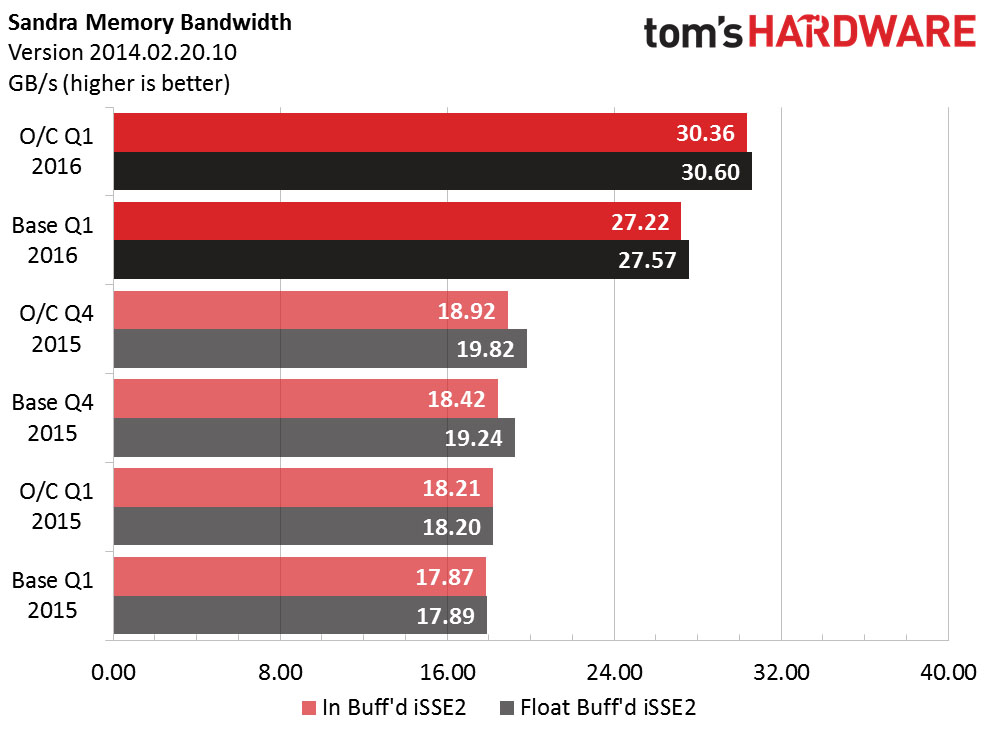
Gaming
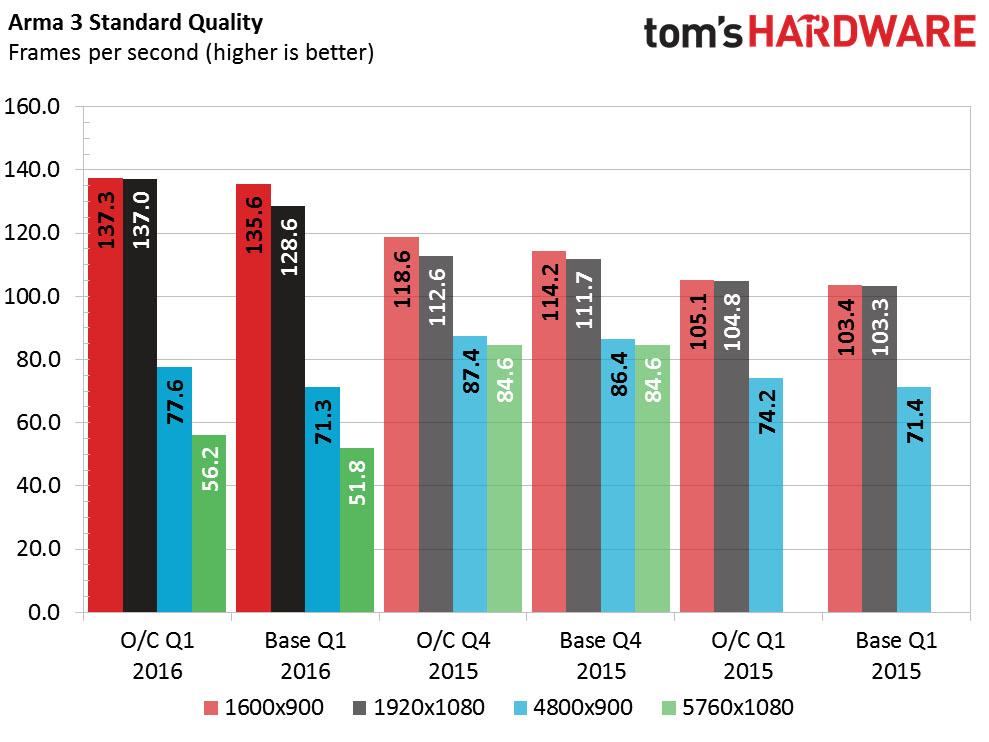
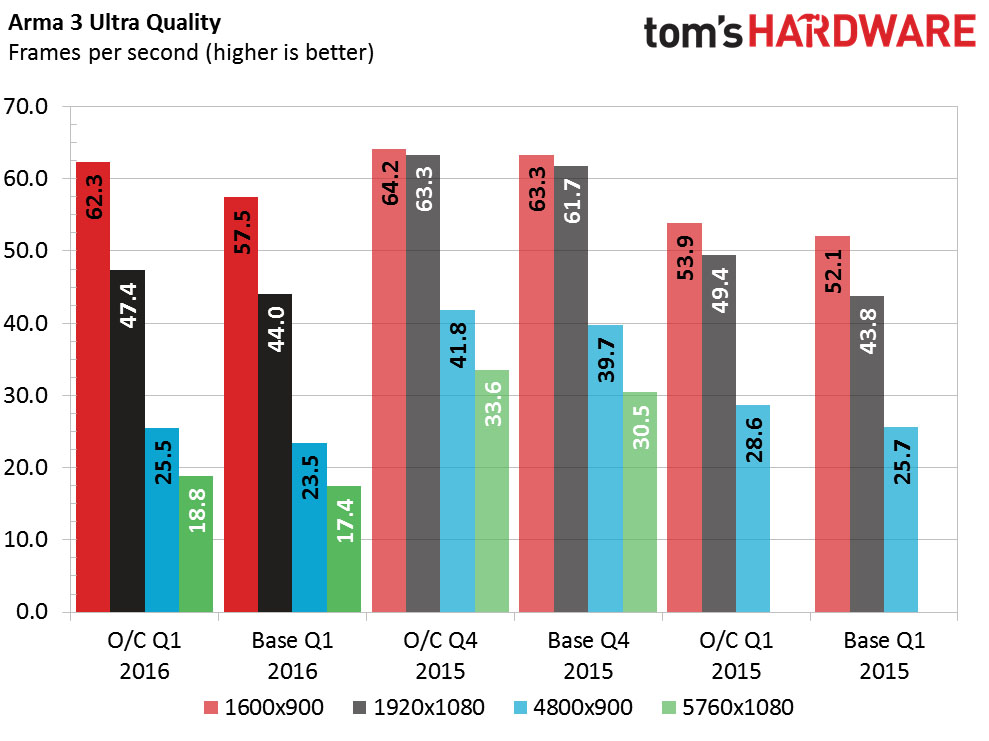
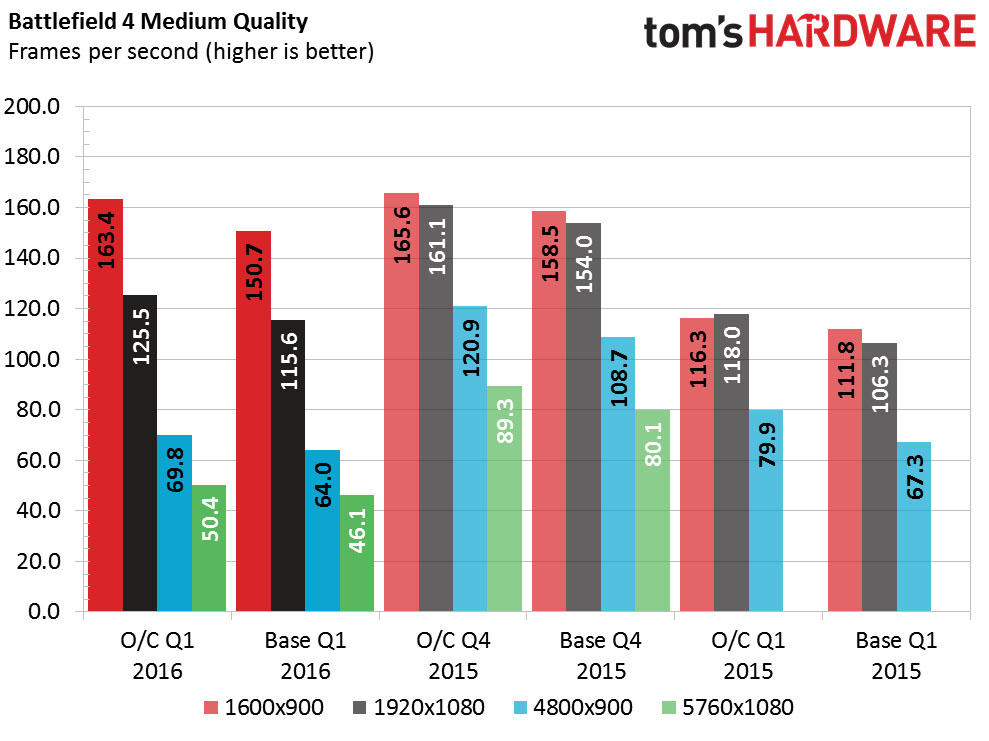
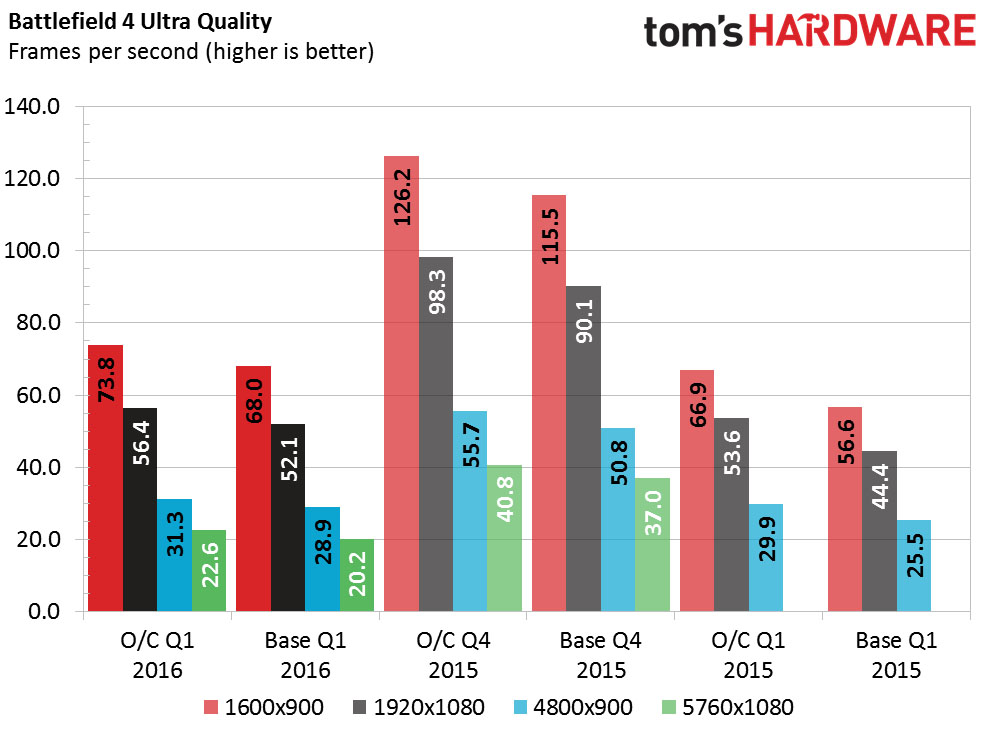
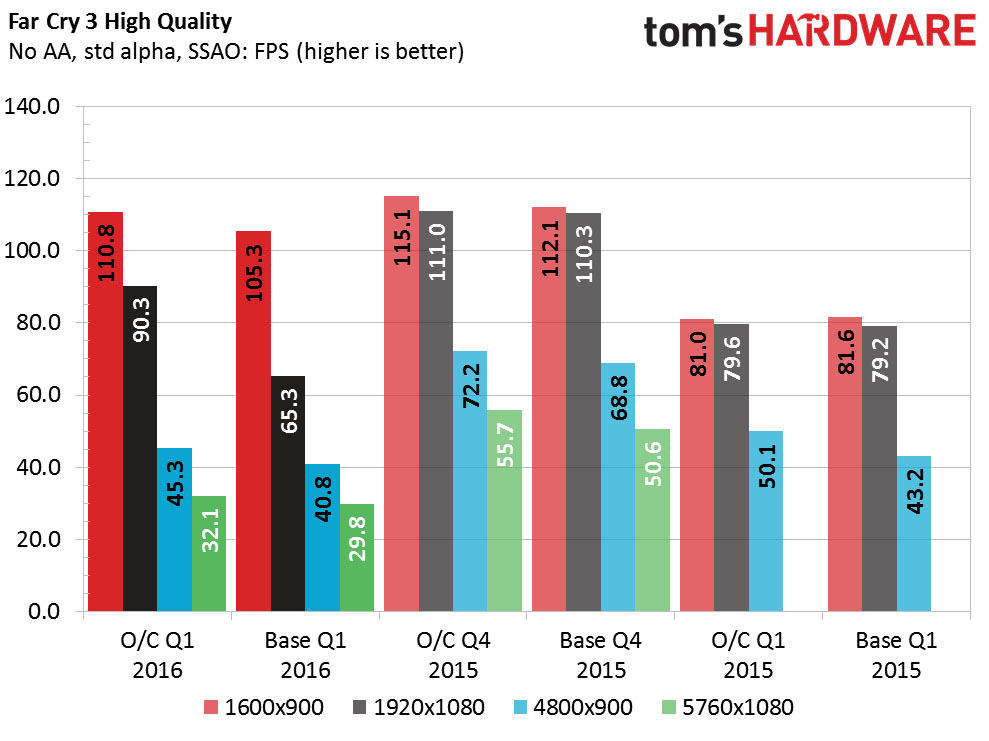
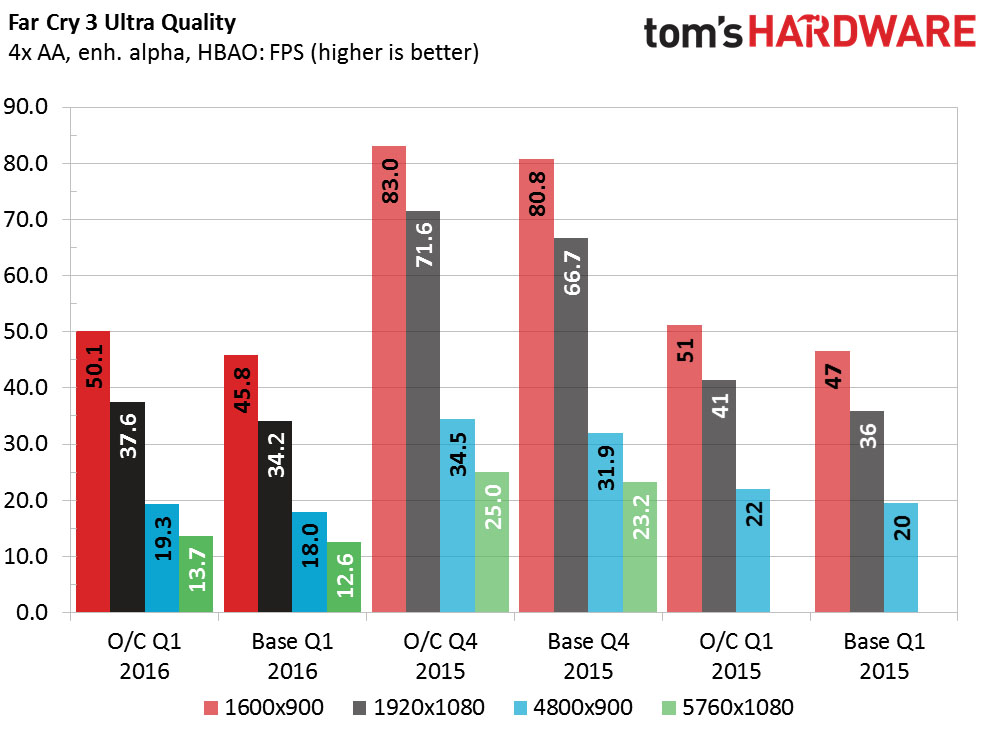
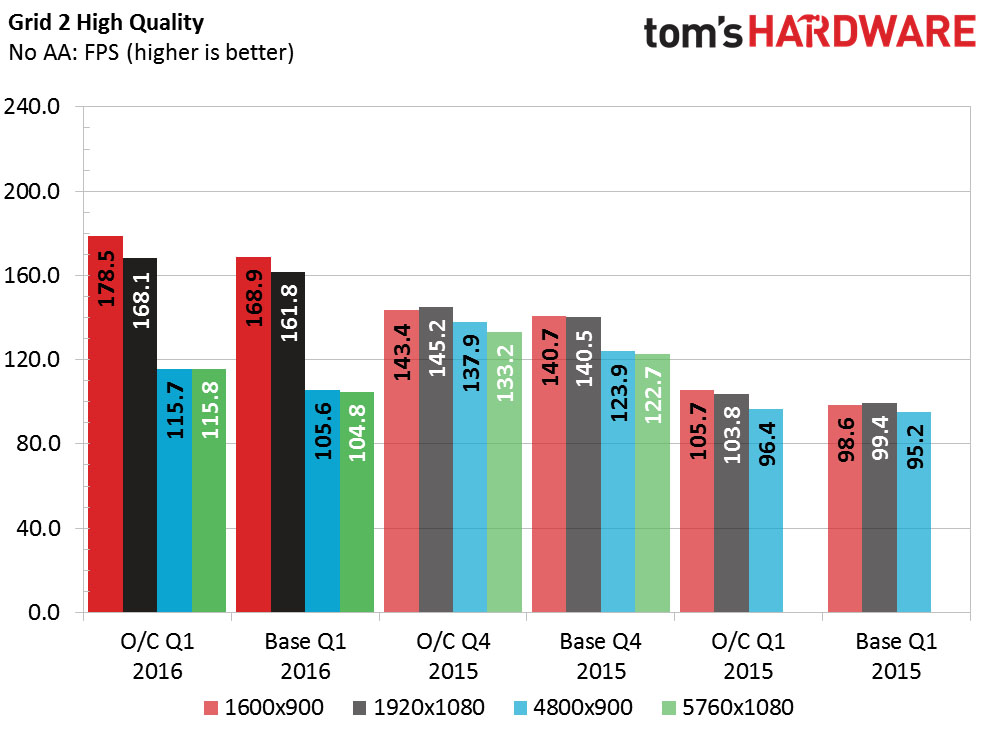
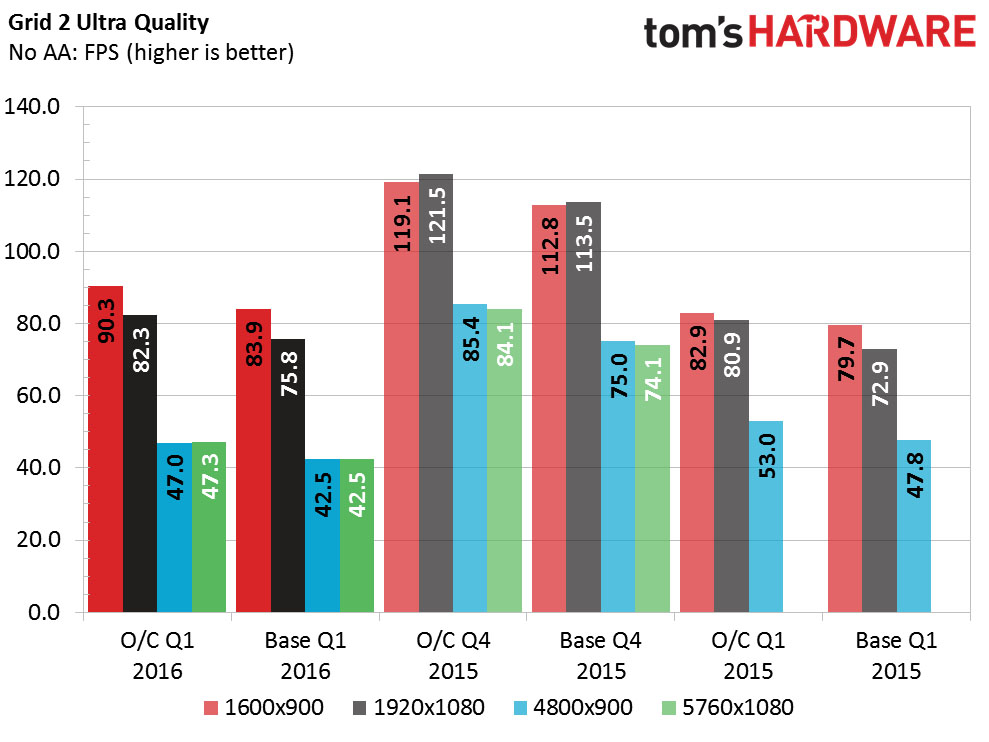
We see interesting trends in the gaming benchmarks. At lower resolutions and details settings, situations where the CPU faces the brunt of the work, the 2016 machine often takes a strong lead. Arma is very CPU dependent and Grid loves memory bandwidth, and with both Skylake does better than Haswell. Turn up the details, or switch to Far Cry or Battlefield, which emphasizes graphics hardware more, and the GTX 950's limitations are shown. Though despite costing considerably less money, the overclocked 950 delivers playable experiences across the board at 1080p.
Applications
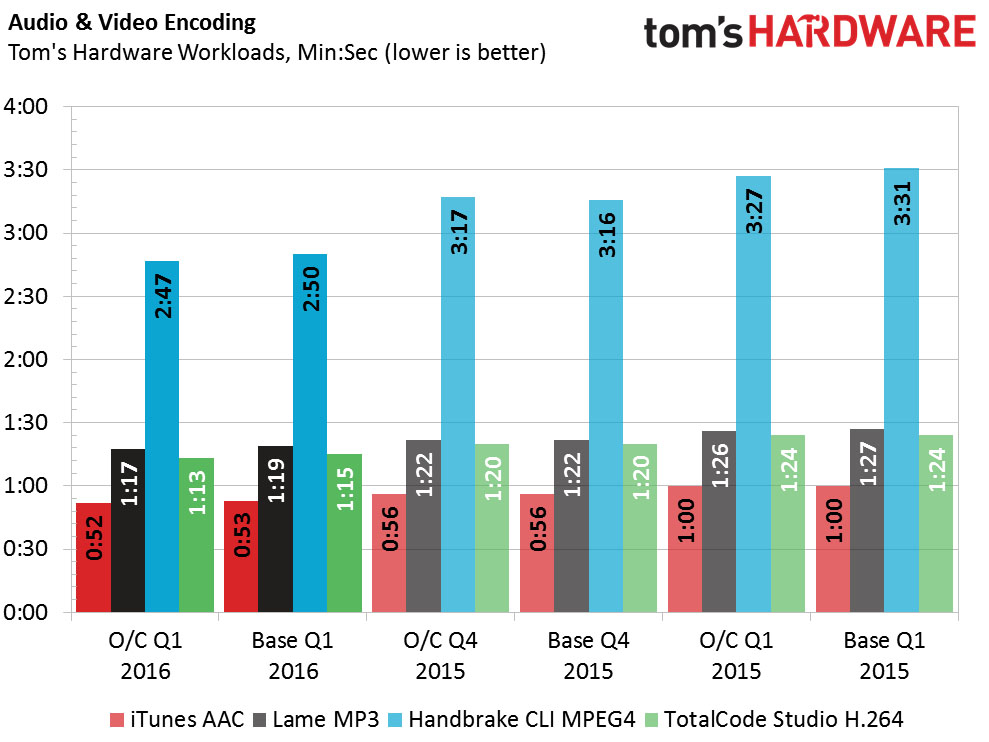
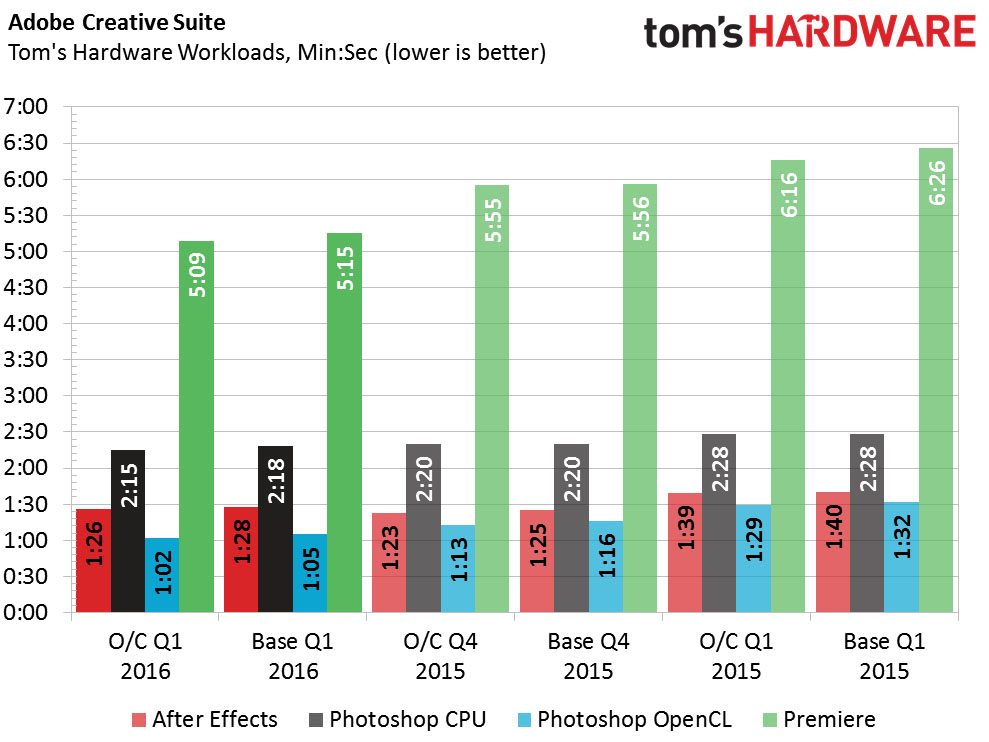
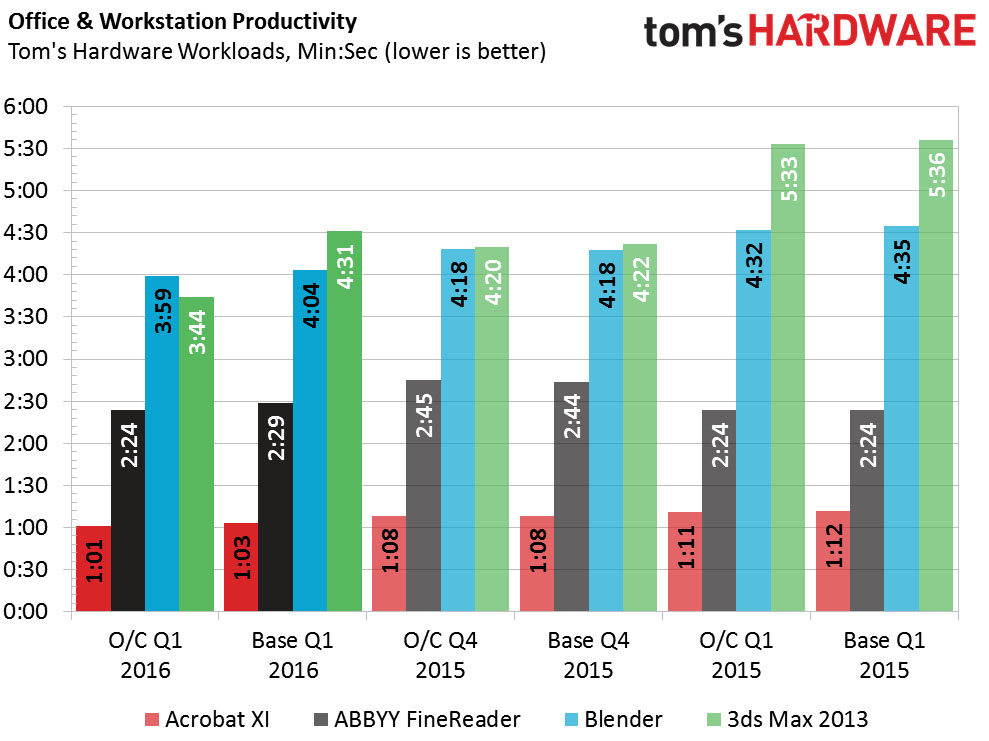
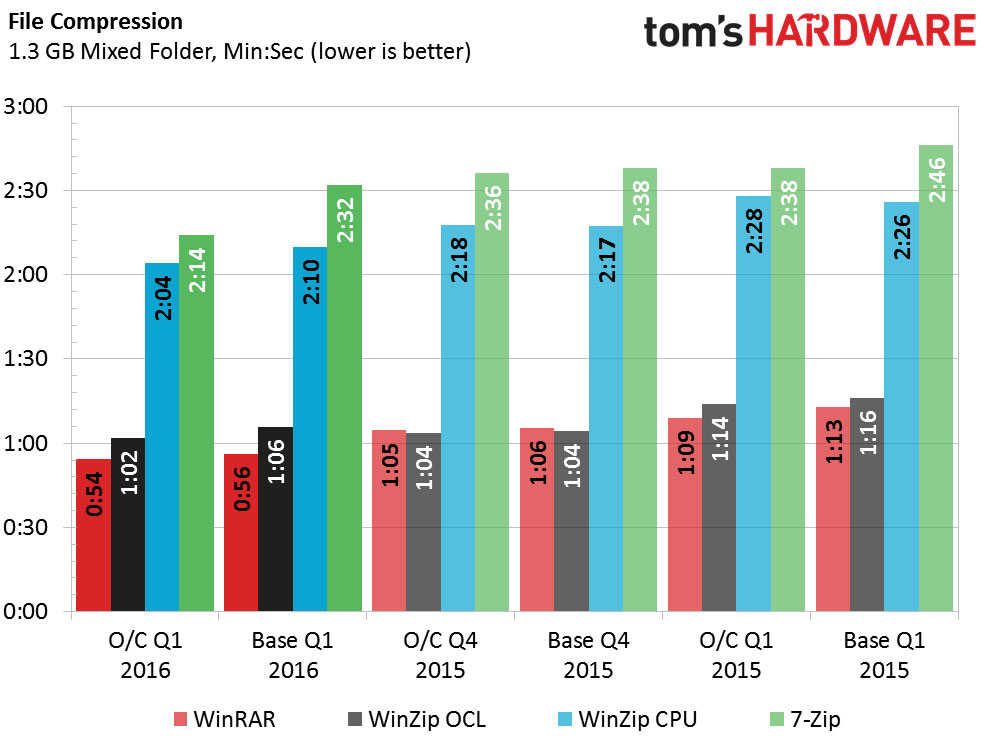
All three machines have 2C/4T processors at similar speeds so it's up to architecture to be the differentiator. Skylake asserts its efficiency over Haswell with small victories across the board.
Power & Temperature
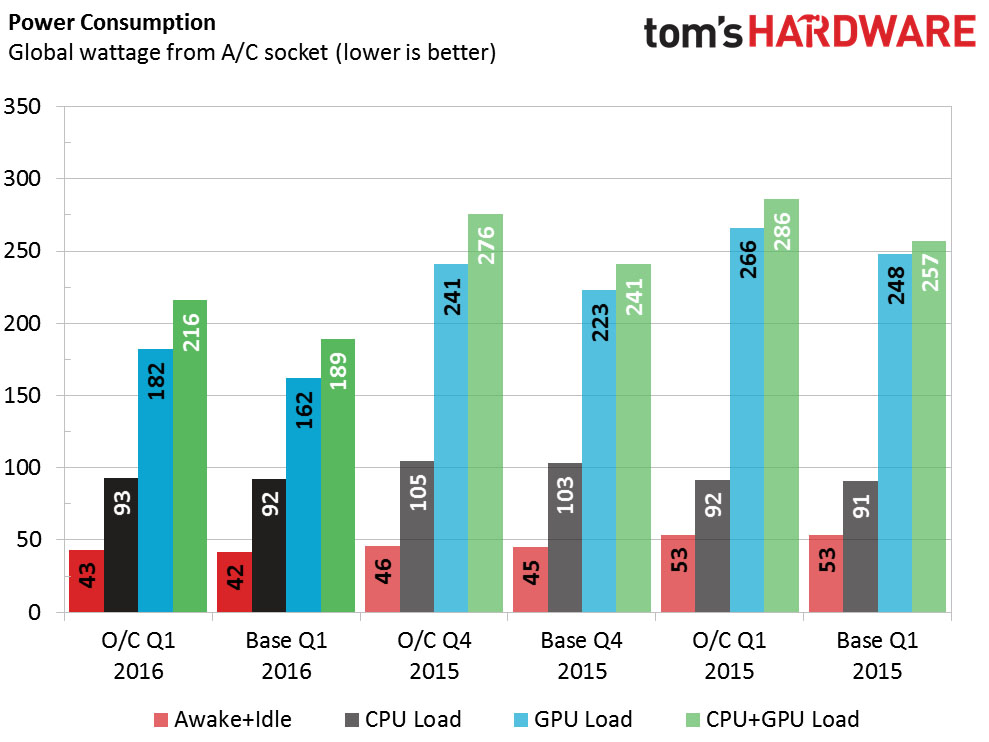
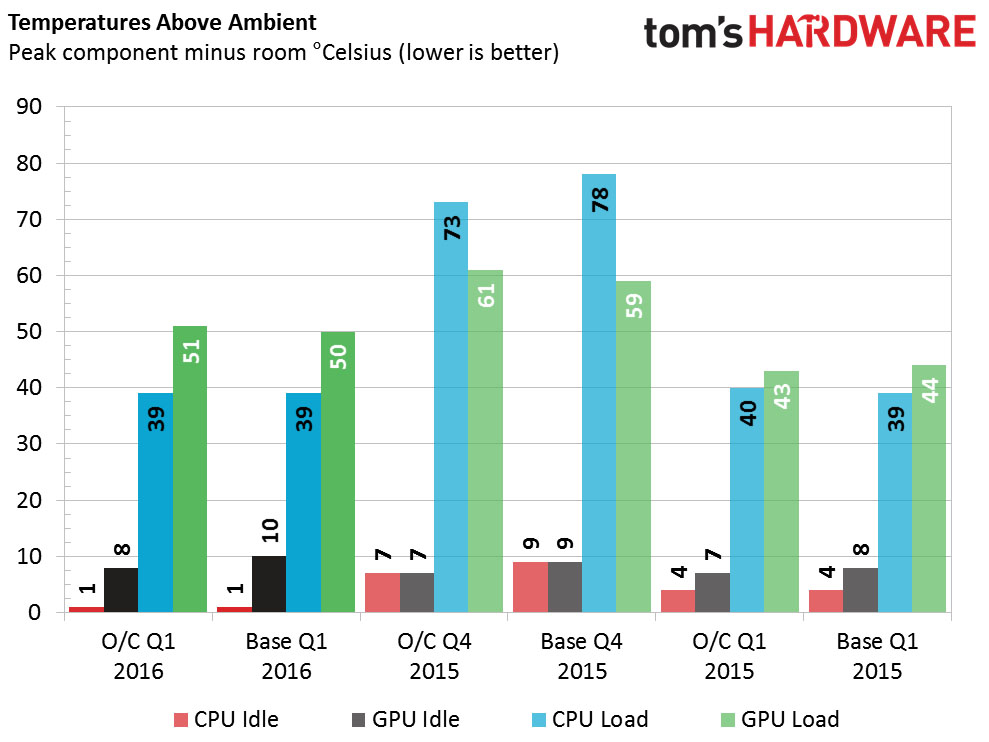
While the 6100 is draws slightly less power than the 4170 or 4150, the big difference in power consumption is the GPU. Temperature-wise, the 200T keeps the 6100 just above ambient at idle. Moving the case fan over the GPU also lets it stay cooler, even when overclocked.
Overall Performance & Efficiency
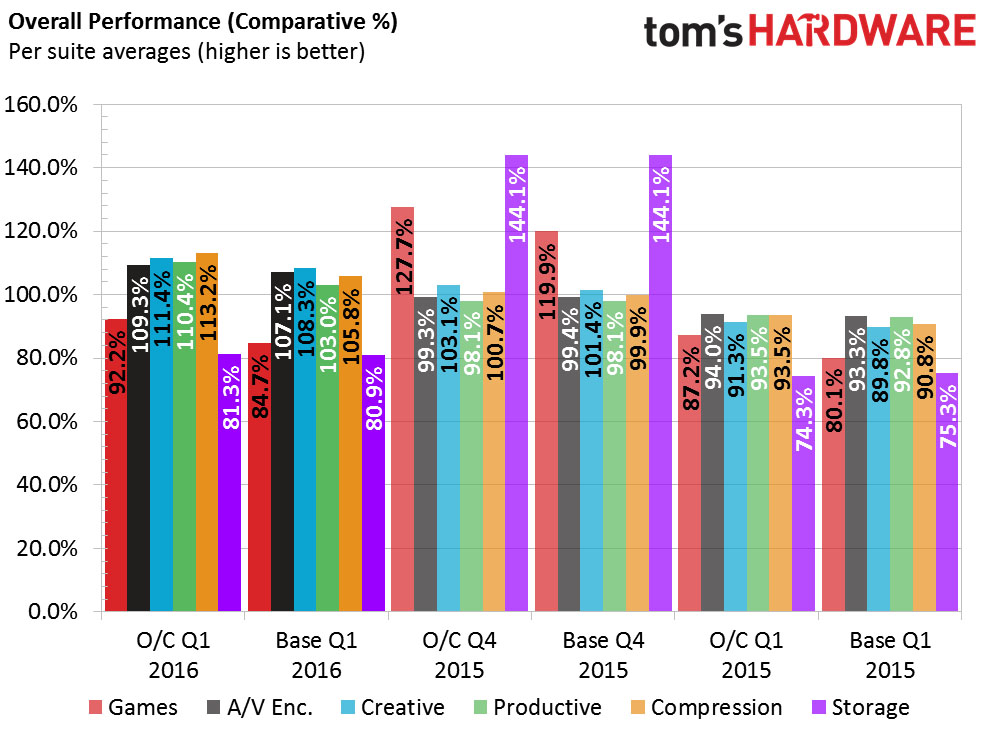
The 2016 Skylake leads in all categories but two: storage and gaming. This is perfectly expected considering the less powerful GPU and spindle hard drive. Once overclocked, it leads by double-digits.
Get Tom's Hardware's best news and in-depth reviews, straight to your inbox.
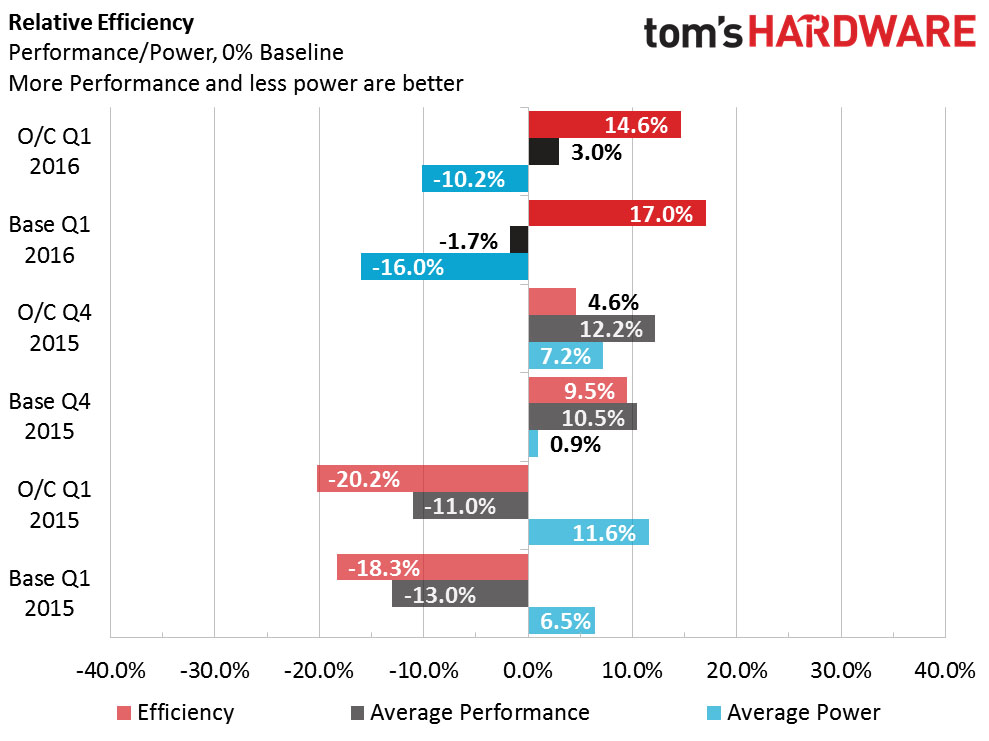
The Skylake build doesn't always lead in pure performance, but uses far less power proportionally speaking to the other machines, yielding it a big efficiency win.
System Value
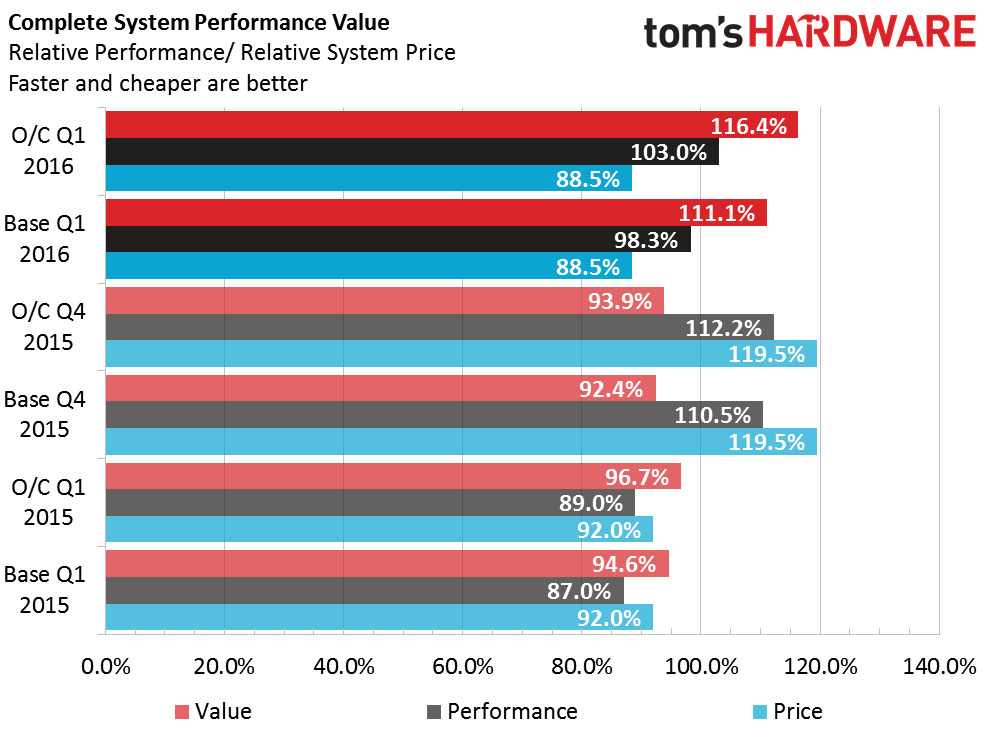
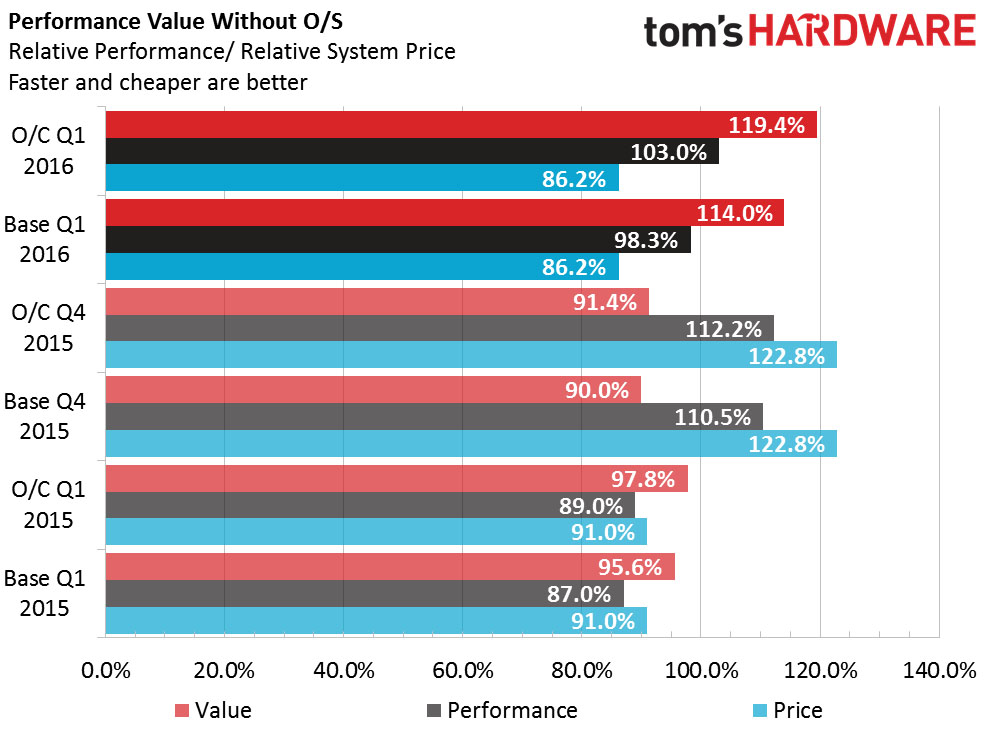
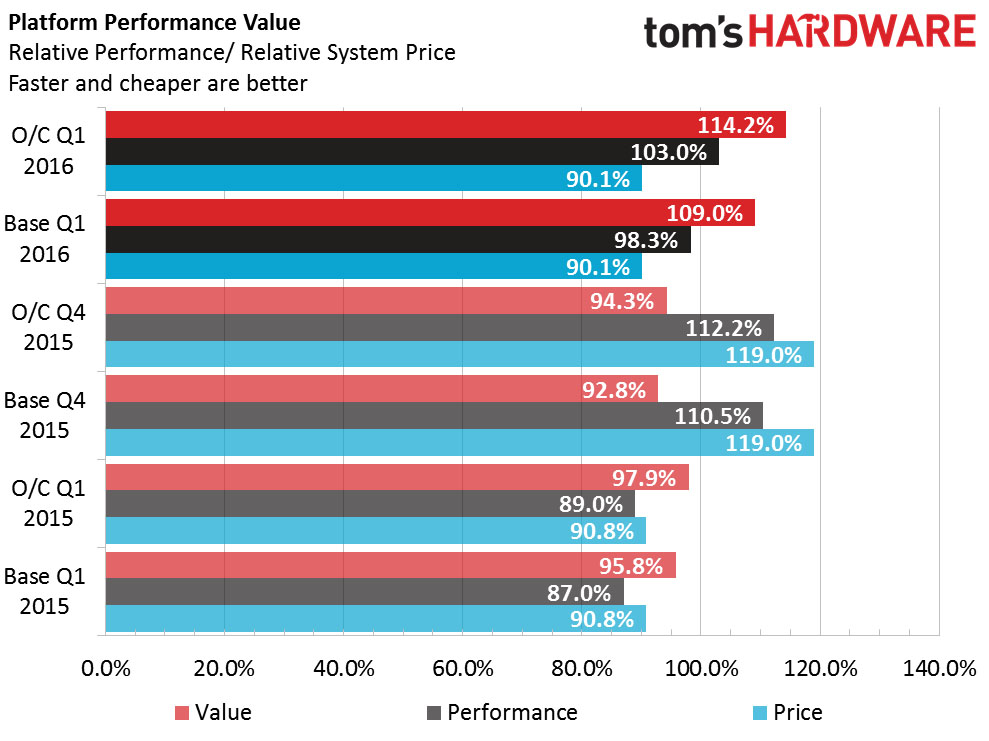
The 2016 Skylake comes in second for total performance when we calculate all the results together. However it did so while costing less than either of its competitors. It doesn't matter if you count the whole system, just the hardware, or the platform components alone, the 2016 build comes away with the value crown. While the 2 percent CPU overclock isn't a lot, combined with tuned RAM and graphics, means a value bonus of 20 percent over the other entries.
Final Word
Last quarter I pledged that I'd do a simple build this time after killing myself on two machines. And like so many enthusiasts I let myself get sucked back into the game. Why do we do this to ourselves? Are we gluttons for punishment? Is the siren song of low-cost / high performance machines truly irresistible? Or have we somehow convinced ourselves there is a free lunch out there?
Overall, this build did exactly what it was expected to, just not in the way it was expected. By paring back unnecessary costs and parts, we have a system that performs well in every facet yet is still reasonably priced. I must of course ask myself if I could do better.
First, this machine needs flash storage to be truly considered general purpose. I explained my reasoning why I skipped a SSD in this quarter's build. But anyone using this as a guide to build their own machine, I implore you to spend a little extra to get at least a 120GB SSD as a boot drive. It simply deserves it. If you need to, cut back the GPU to a 750 Ti. An SSD simply makes a computer feel faster and more responsive in nearly every aspect. Unless you have an extremely tight and inflexible budget, I recommend a SSD in every new computer.
Second, the overclock wasn't a complete failure, but it wasn't nearly as significant as I intended. I simply hit too many questions and obstacles to sort through in the brief time I had to tune this machine. But even with more time, I doubt I could improve much upon this machine as presently configured. The unstable memory at high BCLK makes this only half a machine and losing AVX defangs the i3 with its limited cores. Fixing this build in this regard likely means a more expensive motherboard at the very least. And of course that leads us to a familiar topic of whether it's worth spending the extra money for extra performance.
As I talked about last quarter, whether it's paying extra money for parts or spending your time and effort on tuning them (usually a combination of both), you will always spend more on an overclocked machine than one at stock clocks. Some of my colleagues talk about "leaving performance on the table." Truth be told, I've never liked that phrase. I don't find it to be true. It only takes one piece of the puzzle to bring the whole thing to a halt. In my experience that piece tends to be the motherboard.
Now the Pro4S seems like a fine board for the price to me. I didn't have time to give it a thorough review, but initial examination marks it as one that would do well in a budget overclocking build with an unlocked CPU. Remember that options available in a motherboard's UEFI are almost always dependent on the CPU used. Not all chips allow full control of every multiplier, every clock and every voltage. Pricier boards also tend to offer more settings and more control when overclocking.
My experiments with overclocking on a tight budget have consistently shown the very settings that would save a failed overclock are those that were hidden due to not spending more on parts. That SuperMicro board people are talking about goes for at least $130, over 50 percent more than I spent on mine. Many others setting records with i3 chips are doing so on premium Z170 boards. Had I purchased the MSI Z170-A in time, perhaps this machine would have done better. Had I purchased any manufacturer's top-end Z board, I'm certain of it.
Now don't get me wrong. I'm not trying to discourage anyone from trying. By all means, go out and experiment yourselves. Just understand you may fail a few times. I'd like to think the less than spectacular results I've had in the SBMs are mostly the result of very experimental builds (I'm sure some cynics will say they're proof I'm unqualified to write these). But every now and then you also hit significant pay dirt (I'll be touting the Intel Munchkin 2.0 for a while). Just remember you'll need to purchase your own lunch.
And on that note, if you'll excuse me, I think I'll go buy myself a sandwich.
Eric Vander Linden is a Contributing Writer for Tom's Hardware. Follow him on Twitter.
Follow us on Facebook, Google+, RSS, Twitter and YouTube.